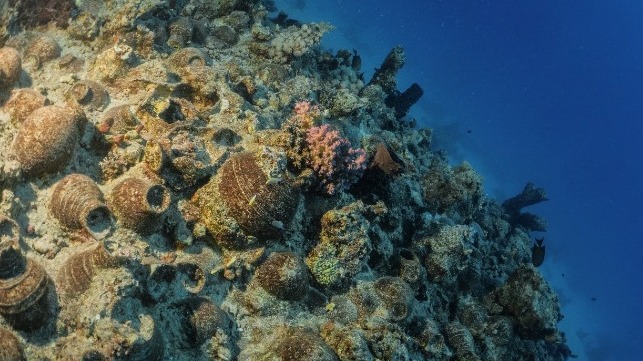Saudi Tourism Agency Plans to Excavate 18th-Century Red Sea Wreck Site

Saudi Arabia is planning a delicate excavation of an 18th-century shipwreck from the bed of the Red Sea as part of a wider mission to build a new tourist industy.
The Red Sea Development Company (TRSDC) has announced intentions to excavate what it believes to be the Red Sea’s best preserved and most intact wooden shipwreck. The wreck will be put on display at a new purpose-built museum in Jeddah.
TRSDC believes that the coastal waters of the Red Sea contain significant points of historical interest, and it has partnered with the Saudi Ministry of Culture, the Heritage Commission and the Museums Commission to undertake the Kingdom’s first underwater excavation.
The University of Napoli L’Orientale will oversee the complex expedition to lift the wooden shipwreck from the bed of the Red Sea.
According to Dr Chiara Zazzaro, Director of Red Sea Shipwreck Excavation and Associate Professor of Maritime Archaeology at the University of Naples "L'Orientale", Italy, the shipwreck is currently the most intact and best-preserved wooden shipwreck in the Red Sea. With a cargo of jars, porcelain and spices, this 18th century merchantman testifies to the intense trading activities going on in the Red Sea before the opening of the Suez Canal, and its articulated connection with the wider Indian Ocean trade.
“The preserved wooden structure represents unique evidence of massive and expensive boatbuilding construction, previously unknown in the region,” he explained.
The shipwreck is believed to have occurred sometime between 1725-1750 and is located in the Al Wajh lagoon. Submersed in 65-70 feet of water, the hull remains in the seabed, along with a mound of 1,000-plus visible jugs which have calcified into a single group.
The vessel is approximately 130 feet in length and 33 feet wide with an intact cargo of potentially 1,000 tons. All artifacts will be preserved, catalogued, and stored in the Red Sea Museum in Jeddah, while some pieces will be displayed for visitors of The Red Sea Project.
The hull, which has calcified into something akin to petrified wood, and the approximately 4,000 highly decorated earthenware jars of various colors, shapes and designs, which has also calcified into a solid mass, will be left in place for divers to see. The kingdom hopes that this attraction will add to its goal to draw about seven million visitors to Jeddah annually.
Through the Red Sea Project, Saudi Arabia intends to start welcoming visitors by the end of next year when phase one of the project - which includes 16 hotels - will be completed.
Upon completion in 2030, the entire project will comprise 50 resorts, offering up to 8,000 hotel rooms and more than 1,000 residential properties across 22 islands and six inland sites. The destination will also include an international airport, luxury marinas, golf courses, entertainment, and leisure facilities. TRSDC said the project has more than 700 contracts signed to date with a combined value over $4.7 billion.
